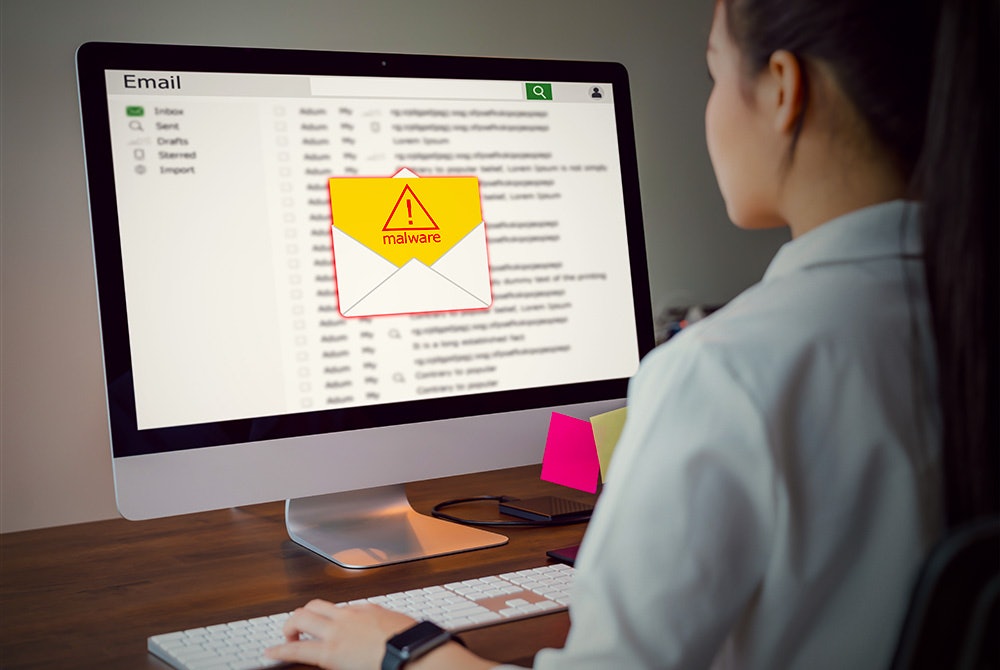- Internet Crime Complaint Center (FBI)
- The Internal Revenue Service (IRS)
- Anti-Phishing Working Group
- The Federal Trade Commission (FTC)
- Local Law Enforcement
- Businesses of People Being Impersonated
- What To Do If You Receive A Scam Email
- What To Do If You Fall For An Email Scam
There are various places to report email scams depending on what type of scam you receive.
Internet Crime Complaint Center (FBI)
In general, the best place to report email scams is the Internet Crime Complaint Center (IC3), which is run by the Federal Bureau of Investigation (FBI).
The Internet Crime Complaint Center can’t follow up with you after you file a complaint. However, if your report seems like a scam, they will forward the information to local, federal, or international law enforcement.
Receive an Email from the FBI?
The FBI emphasizes that they never send mass emails—if you receive an email claiming to be from them, it is a scam and should be reported.
The Internal Revenue Service (IRS)
The IRS is another government agency that will never contact you requesting personal information through text, email, or social media. Therefore, if you ever receive an email claiming to be from the IRS requesting money or access to personal information, it is a scam. You should:
- Not click any of the links provided
- Not respond
- Take a screenshot of the email
- Delete it
- Send a screenshot to [email protected].
Anti-Phishing Working Group
Other phishing emails where the sender is not who they say they are should be reported to the Anti-Phishing Working Group by forwarding them to [email protected].
This organization collects information about scam emails, analyzes them, and stores the data. They will not be able to help you recoup any lost money or help you recover from identity theft, but they may be able to track down the scammers before they can use more of your information or target others.
The Federal Trade Commission (FTC)
If you are receiving an unreasonable amount of spam and unsolicited emails, you can report them to the Federal Trade Commission by sending screenshots to [email protected].
To report any other types of email scams:
- File a complaint online
- Call 877-382-4357
The Federal Trade Commission will not be able to get your money back directly, but they do work with law enforcement agencies who may be able to help.
Local Law Enforcement
If you know for a fact you were scammed, you should report it to your local law enforcement agency. It is best to have a record for the future if the scammers are ever caught and sued.
Plus, if you have issues in the future with identity theft, then you will already have the proof that you filed a police report and the charges are fraudulent.
Businesses of People Being Impersonated
You should report scams emails to the company that is being impersonated as it may help put a stop to the scam quicker and prevent more people from falling victim. For example, if you receive an email that looks like it's from PayPal, but it has several red flags of a fake, report it to PayPal immediately.
What To Do If You Receive A Scam Email
Always keep a close eye on any emails you receive, especially from unknown senders. Sometimes scammers will try to impersonate people you know and use similar email addresses, only changing them slightly from the actual address. If you aren’t paying close attention, you might miss it and click on a harmful link.
Some immediate things to look out for when inspecting a suspicious email include:
- Misspelled email address
- A distorted logo
- Generic introduction line
- Suspicious attachments or links
- Threats or a serious sense of urgency
- Grammar and spelling errors
- Irregular or missing signature line
Look Closely at the Domain Name
Many scammers will try to mimic a legitimate brand’s email address, for example, [email protected] (instead of [email protected]). They may even set their name as “Apple Support,” but their email may show [email protected]. Big brands won’t have an @gmail.com email address and will have the correct domain in their email.
Once you realize you have a scam email in your inbox, you should:
- Take a screenshot of it
- Delete it
- Never respond
- Contact the company or person directly instead of following the links in the email
- Report it
The longer you save a scam email, the higher the chances are of your device catching a virus or getting hacked.
What To Do If You Fall For An Email Scam
After you fall for an email scam, not only is your information at risk, but your computer is potentially at risk too. A harmful link could affect your entire computer. After receiving a potential email scam, you should:
- Keep your programs up to date
- Install security software
- Immediately change all passwords
- Contact your bank if you think your credit card or other accounts have been compromised
- Report the scam to one of the organizations mentioned above
- Place a fraud alert on your credit if you gave out information putting your identity at risk
- File an identity theft report with the Federal Trade Commission


Comments